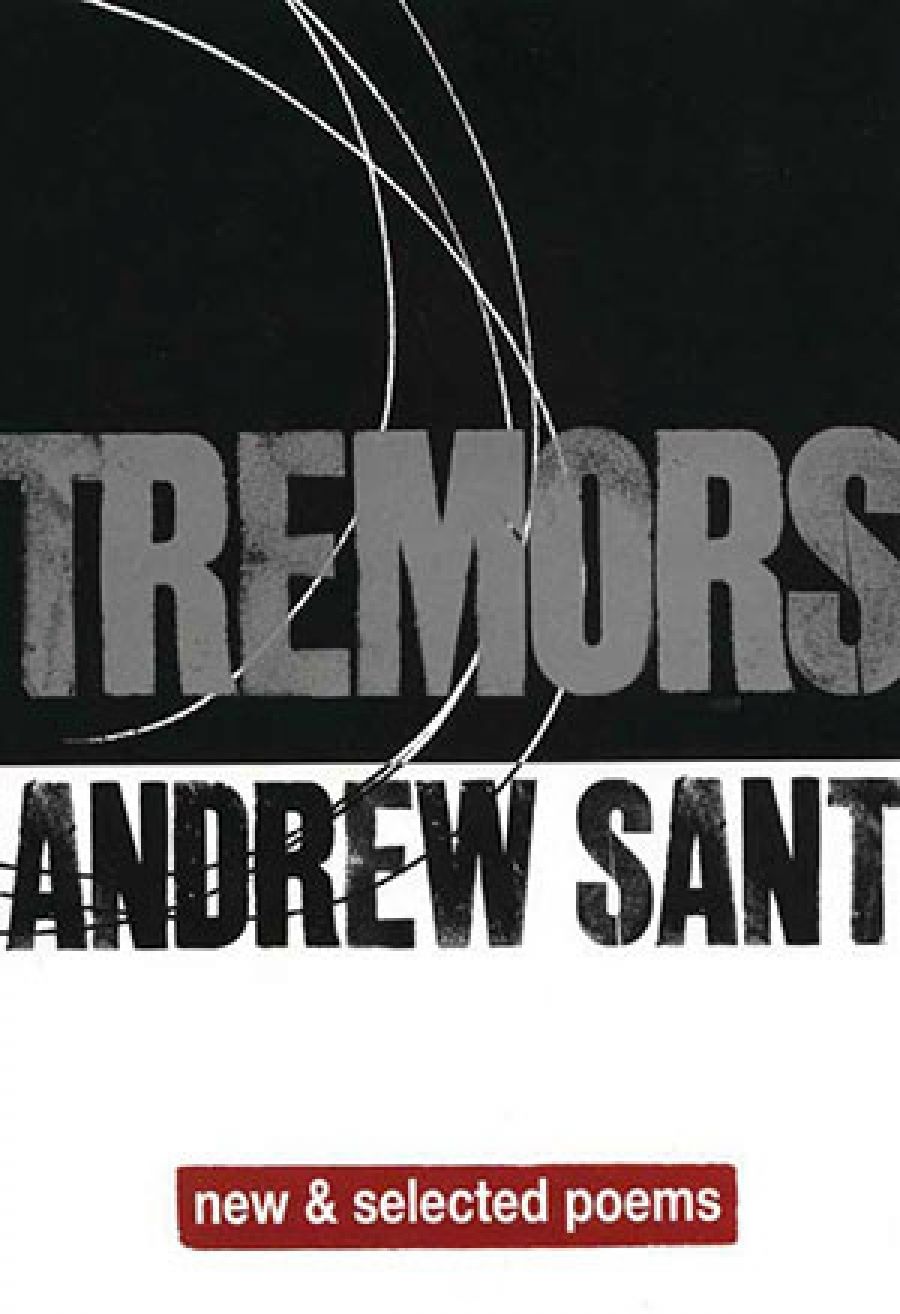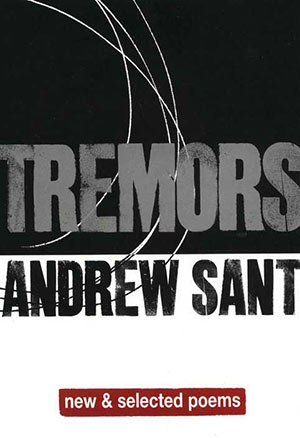
- Free Article: No
- Contents Category: Poetry
- Review Article: Yes
- Article Title: A cool light
- Online Only: No
- Custom Highlight Text:
In ‘Glenlyon’, the opening poem of his most recent collection, Tremors: New and Selected Poems, Andrew Sant provides readers with clues about his approach to poetry. ‘Glenlyon’ speaks of the ‘cool light’ of the page and ‘my shadow’s / hovering vague shape’. Certainly, Sant’s presence is invested in much of his work and his poetry prizes coolness and clarity. While he is sometimes a passionate poet, this passion is rarely overt and it is balanced by a determination to make good argument out of his poetic material and by a characteristically reasonable tone.
- Book 1 Title: Tremors
- Book 1 Subtitle: New and selected poems
- Book 1 Biblio: Black Pepper, $27.50 pb, 270 pp
- Book 1 Cover Small (400 x 600):

- Book 1 Cover (800 x 1200):

Sant’s poetic cast of mind is exploratory and questioning. Many of his poems combine a firm, sinewy sense of direction with a provisional air, as if he is always aware that there are other perspectives to be expressed and other perceptions to be countenanced. He writes that ‘Whatever is solid / as rocks or facts breeds / echoes’ (‘Geologist in a Cave’), and his recurrent use of the imagery of vibrations and tremors is well suited to work which is conscious of the way meanings are likely to ramify and expand in unexpected directions. Sant’s poem ‘Soundwaves’ celebrates this idea, beginning: ‘Selecting a loose vibration from the taut air / and threading it through the wired network / into an infectious signal.’ At its conclusion, this poem seems as much about the poet’s own cast of mind, and his craft as a poet, as about radio waves.
Many of Sant’s poems are relatively short lyrics which, even when they do not employ the first person pronoun, imply an observant, wry, sometimes ironic author who is also occasionally ruefully (and attractively) aware of his shortcomings and the foibles of others. Sometimes, as in ‘Taking My Daughter to the Cave’, he writes poems of a persuasive and nuanced intimacy. He is also capable of considerable wit. The opening stanza of ‘Two Ways of Looking at Landscape’, for example, contrasts a famous Tang Dynasty lyric about the moon by the Chinese poet Li Bai with ‘sore feet and vertiginous thoughts’, adding: ‘Put a lyric in the pot and it would produce steam.’
More generally, one of Sant’s rhetorical strategies is to present the reader with an engaged and engaging voice that suggests candour, although, occasionally, the results can seem unsubtle. ‘I’m wise to their abrupt laconics which, stripped / of correctness, daily penetrate their shared, unlovely prospect’, he writes in ‘A Class of Unemployed Youth’. But even such prosy lines can be convincing because of Sant’s energetic (and sometimes colloquial) verve, his humour and his persuasive control of tone.
Perhaps what chiefly makes Sant a distinctive and distinguished poet is his craftsmanship. Infrequently attracted to obvious formalities such as rhyme and metre, his poems are usually written in a measured ‘free verse’, and there is always a sense that he believes in the ‘made’ poem, in which every word and enjambment have been carefully placed. In ‘Visit to Ida Bay’, the line breaks are deft: ‘Wheezing steam, the green engine / becomes a cocky pioneer / that blows its top as we jerk // from the station.’ The poem’s beautifully situated, evocative imagery reveals one of the hallmarks of Sant’s best writing.
His poetry ranges over a wide array of subjects, many of them relating to the long period he lived in Tasmania (including Tasmania’s sometimes grim history) and the natural world. A number of works foreground his skill with language, including ‘A Firework Maker on the Domestic Front’, which puns on a variety of pyrotechnical terms: ‘Arguments between / the wife and me peter out. She fumes.’ ‘Northwood Hills’ conjures skilfully the ‘cuckoo-spit’ secreted on plants by insects: ‘There it was, frothy and spit-like, / gobbed onto stems and tendrils / of wild peas occasionally / plentiful in wet fields.’ In a characteristic transformation, by the end of this poem the peas become a metaphor for ‘memories that unfurl / sticky as tendrils’. Included in Tremors are some of Sant’s longer poems, or poetic sequences, such as the fast-paced and amusing ‘Summertime: A Holiday Chronicle’. In this essentially lightweight narrative, his writing is terse, economical and subtly controlled. More moving, if less polished, is the sequence ‘Stories of My Father’, and there is also an amusing and skilful sonnet sequence about Rome and Giuseppe Belli, nineteenth-century ‘poet and Vatican censor’.
Poem after poem in this collection radiates a quickened, nervous energy and an active sense of engagement with the task and processes of apprehending his surroundings. Sant confesses to be self-conscious at times, as when his observation of a wren leaves him with ‘a footnote of detail / towards an imminent theme’ rather than ‘complete experience’ (‘Wren’). However, his poetry is continually noticing the world and its history, valuing attentiveness and reminding his readers, as he writes in ‘Myrtle Forests’, to appreciate the ‘buoyant prosperities of light’ as well as the ‘owlish and spidery dank / encampments of gloom’.


Comments powered by CComment